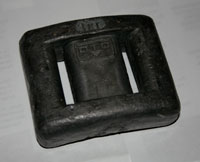  Lead Facts Lead Facts
Enjoy our list of interesting lead facts. Learn about the uses and properties of lead and how this metal has been used throughout history. Find out how the ancient Romans used lead, what products lead is used to make today, where the chemical element symbol Pb comes from, what countries produce the most lead, and much more with our fun lead facts. | | |
The symbol for lead, Pb, comes from the Latin name for the metal, plumbum. The English words "plumbing" and "plumber" are derived from this Latin name.
Lead is a soft, malleable, ductile (drawn out into a thin wire) and heavy metal. It initially has a bluish-white color that tarnishes to a dull gray color when exposed to air. It is corrosion resistant and when melted into a liquid has a shiny chrome-silver look.
Lead is also used in the construction industry for roofing, cladding, gutters and glazing bars for stained glass. Its high density and resistance to corrosion makes it useful as the ballast keel of sailboats and as scuba diving weight belts.
Historically, lead has been used as a paint additive, in face whitening make-up, as water pipes, as a preservative for food and drink, as a pesticide, and in paint used on children's toys. However, due to its highly toxic nature, these uses have been stopped in most countries due to the dangers of lead poisoning.
| | | 
| | More Metal Facts: | | | | | | Lead Facts | | | | | | | |
|
|